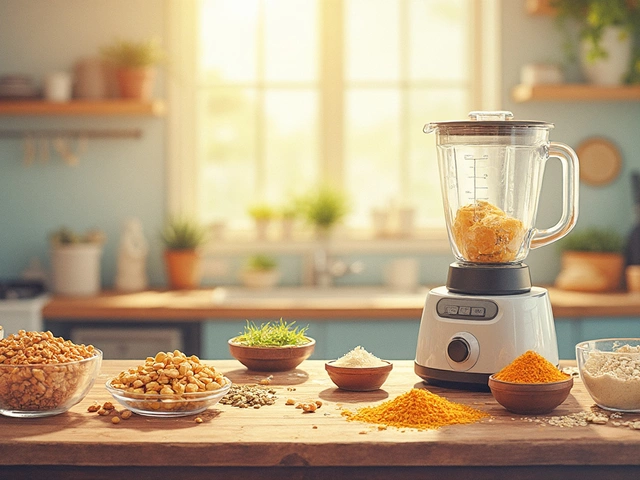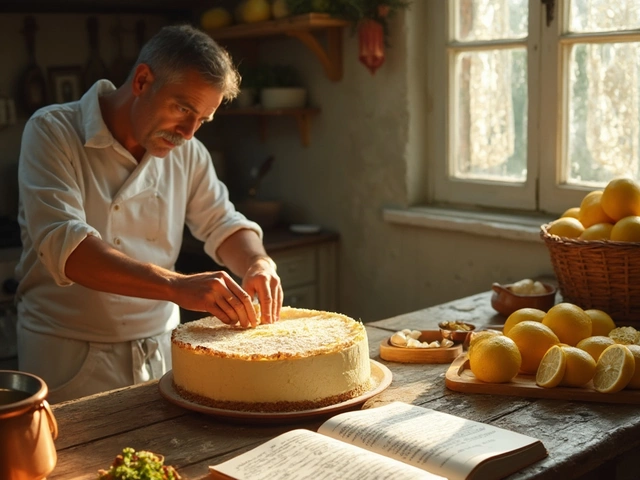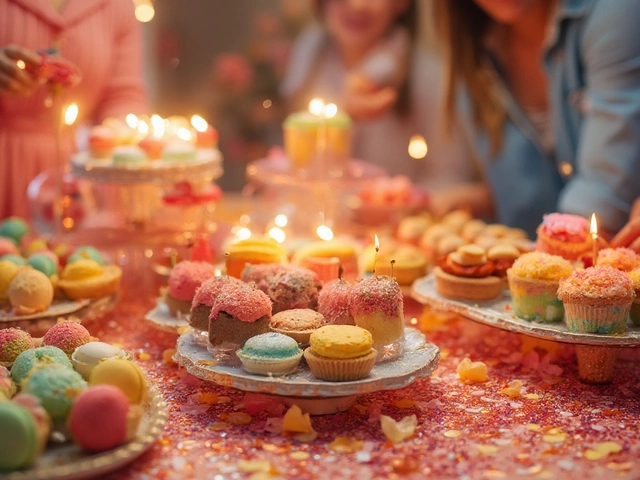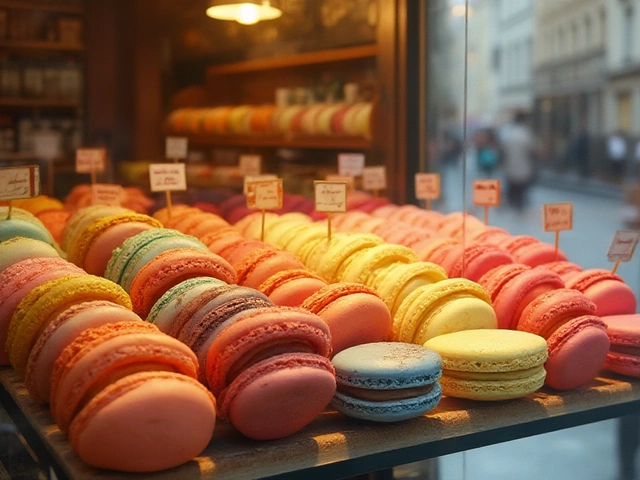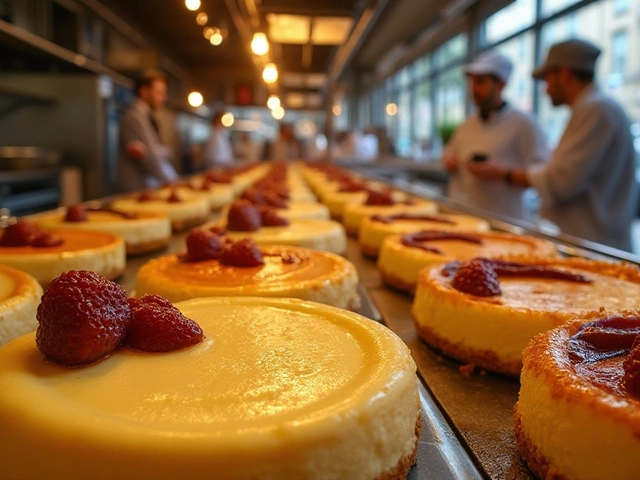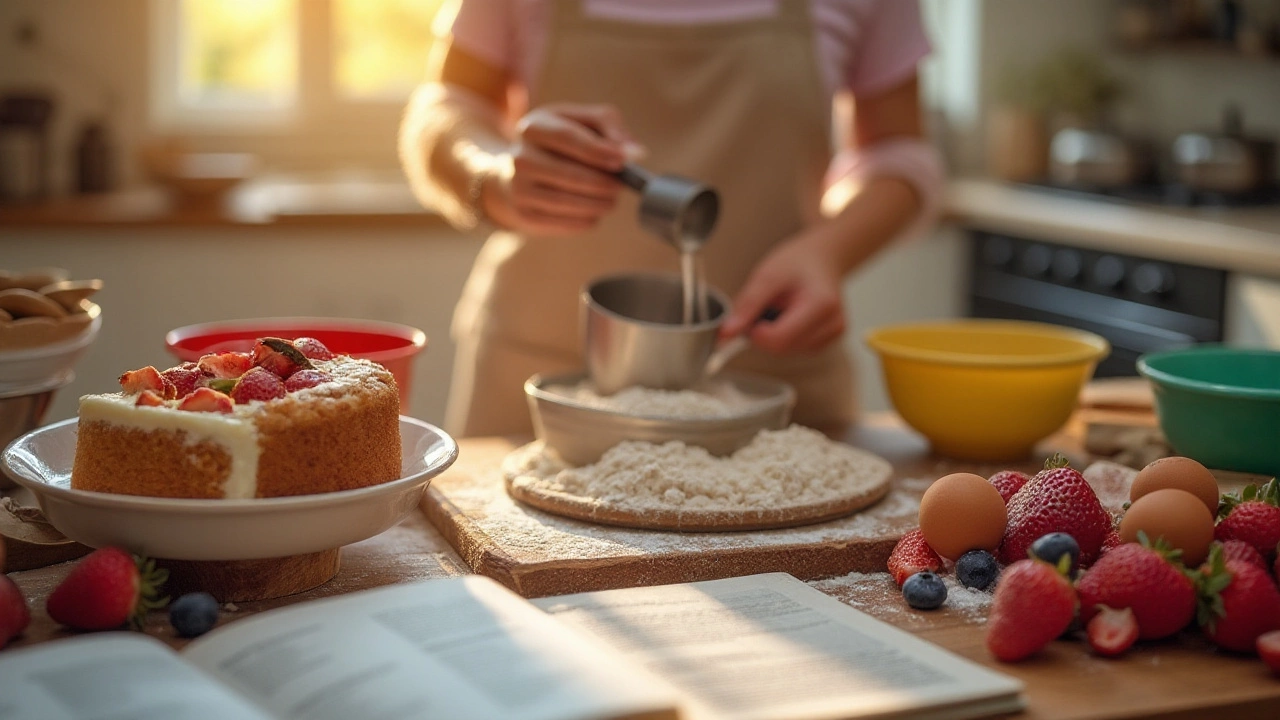
Cake has been a beloved dessert across cultures for centuries, a sweet treat that can transform any moment into a celebration. But with countless flavors and styles, some cakes have emerged as standouts for their remarkable taste. In this exploration of the cake world, we will dive into why certain cakes delight our palates more than others.
From the classic allure of vanilla and chocolate to the zing of modern twists like matcha or orange blossom, each flavor has its own story and magic. Our journey through the layers of cake will uncover the ingredients and techniques that make each bite unforgettable. Join us as we discover what it takes to create a cake so delicious it becomes legendary.
- The Timeless Classics
- Modern Flavor Innovations
- Key Ingredients for Taste Perfection
- Cultural Influences on Cake Tastes
- Tips for Baking Ultimate Delicious Cakes
- Experimenting with Unique Flavors
The Timeless Classics
When thinking about cakes that have stood the test of time, certain flavors immediately come to mind. Among the most beloved are the simple yet profound delights of vanilla and chocolate. These flavors have not only graced countless birthday parties but have also become the foundation for experimentation and innovation within the confectionery world. Vanilla, often characterized by its subtle sweetness and aromatic essence, typically comes from orchids of the genus Vanilla, native to Mexico but it is now grown in tropical regions around the world. Chocolate, derived from cocoa beans, has a rich history tied to ancient civilizations like the Aztecs and Mayans, who considered it the food of the gods. Its inherent complexity, offering a dance of bitterness and sweetness, makes it a beloved choice across cultures.
But why do these flavors continue to hold such universal appeal? It could be the comforting nostalgia they evoke, reminding us of familial gatherings and celebrations. The soft, moist crumb of a well-baked chocolate cake or the airy lightness of a classic vanilla sponge offers more than just flavor; they present an experience. As Julia Child once said,
"A party without cake is just a meeting."Her sentiment rings true as these classic cakes elevate an event from ordinary to memorable, adding a touch of magic to even the simplest occasion.
Exploring deeper, one finds that the beauty of these classic flavors also lies in their versatility. A vanilla base serves as a canvas, inviting a spectrum of embellishments from fresh fruits to sumptuous creams, while chocolate can range from deep, dark intensity to milder milk variations that appeal to different palates. Moreover, the ingredients for these cakes are accessible and straightforward, making them a staple in home kitchens and professional bakeries alike. They often require little more than flour, sugar, butter, eggs, and their titular flavoring, proving that simplicity can indeed reign supreme.
It's interesting to note that vanilla and chocolate's dominance in the cake world isn't just anecdotal; it reflects decades of consumer preferences. Surveys indicate that these flavors consistently top the charts as favorites in numerous countries. In fact, across a sample set of cake sales globally, nearly 70% involve chocolate or vanilla as a primary or secondary flavor. This statistic underpins the lasting legacy and enduring popularity of the classics, serving as a testament to their undeniable charm.
Cake recipes featuring these timeless classics often get handed down through generations, with each baker putting a personal spin on the beloved staples. Whether it's adjusting the sweetness, adding a pinch of spice, or experimenting with unconventional pairings, these adaptations ensure that the classic chocolate and vanilla cakes remain vibrant and relevant in the modern culinary landscape. The ability to transform and adapt while maintaining their foundational essence is the hallmark of why these cakes have and likely will continue to endure for years to come. In an ever-evolving world of taste and decadence, chocolate and vanilla maintain their revered status as the quintessential timeless classics.
Modern Flavor Innovations
The world of cake baking has seen a vibrant evolution in recent years, steering away from traditional tastes and embracing innovative flavor combinations that excite the senses. These modern inventions are about dashing the conventional vanilla and chocolate to the background and exploring ingredients that were once unfathomable in the realm of cakes. Matcha, a finely ground powder of specially grown and processed green tea leaves, has crept its way into the cake scene, offering not just a unique taste but a vibrant green hue. Its slightly bitter taste contrasts wonderfully with the sweetness of a cake, creating a delightful balance on the palate.
Beyond matcha, there is the ever-appealing salted caramel. What began as a trend has definitively established itself as a cornerstone of modern cake flavors. The fusion of saltiness with caramel brings a new depth to cakes, enhancing the sweetness while offering a nuanced complexity. Pairing salted caramel with chocolate is often a match made in heaven, revered for its ability to satisfy sophisticated taste buds. As emphasized by renowned pastry chef Dominique Ansel, "Creativity in flavors can turn a simple cake into an unforgettable experience."
Then there are the floral notes, such as lavender and orange blossom, which have also emerged as popular flavors. They lend an ethereal quality to cakes, introducing a unique aromatic component. These are often used in destination weddings wanting a taste that evokes romance and natural beauty. Moreover, the fusion of herbs and spices, such as rosemary or cardamom, has also gained popularity. These ingredients have traditionally been reserved for savory dishes, but their infusion into cakes has opened a new frontier in cake baking.
To fully embrace these modern flavor innovations, bold bakers around the world have been experimenting with combinations that challenge the norm. Looking to nature, some bakers add ingredients like basil to strawberry shortcake, giving it a savory spin. Others experiment with north African spices in carrot cakes. These not only highlight the cake's other flavors but also add an unexpected flavor layer that captivates the taste buds. Wonderfully, the evolution of these flavors is accompanied by an emphasis on fresh and locally sourced ingredients, interlinking flavor innovation with a nod to sustainability.
Finally, the trend of infusing alcoholic elements, such as aged bourbon or domaine de canton, has also caught the fancy of enthusiasts. These flavors bring warmth and depth, which add a delightful mature edge to desserts. As the quest for delicious cake flavors continues, the possibilities of what can be achieved in the realm of modern cake baking seem limitless. So, if you’re seeking new creative paths, consider diving into these contemporary flavor avenues. They promise not just to whet your appetite but inspire your imagination.
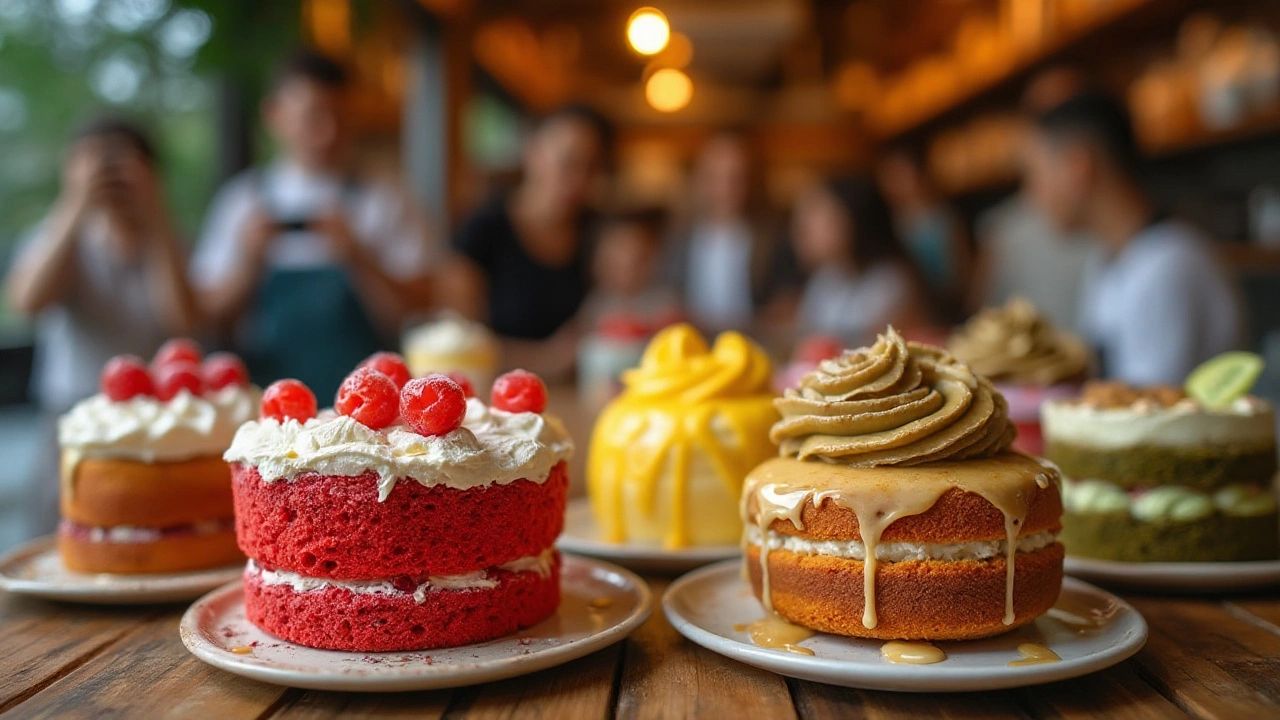
Key Ingredients for Taste Perfection
Embarking on the journey of crafting the most delicious cake recipes begins with the selection of high-quality ingredients. The foundation of any great cake lies in the basic components: flour, sugar, eggs, butter, and leavening agents like baking powder or soda. These staples are the canvas upon which flavors are built, and their quality directly influences the cake's texture and flavor. Opting for unbleached all-purpose flour can make a noticeable difference, as it often provides a fuller, richer taste compared to bleached varieties. Meanwhile, fresh, organic eggs not only offer better flavor but also an appealing golden hue to the cake.
Butter plays a pivotal role in the cake's taste by adding richness. It should ideally be unsalted, allowing bakers to control the salt content more precisely. While margarine or oil may sometimes be used, real butter offers an unparalleled depth of flavor that elevates the end result. Sugar, surprisingly, does more than just sweeten; it helps tenderize the cake, adds moisture, and encourages browning for that delightful crust. Brown sugar imparts a subtle molasses flavor that can complement many cakes, while caster sugar's fine texture is perfect for lighter desserts.
A crucial element for taste perfection is the use of pure extracts and flavorings. Vanilla extract, for instance, often hailed as the queen of ingredients, acts as a flavor enhancer that elevates even a simple sponge cake. Other extracts like almond, peppermint, or coffee can transform the personality of a cake, offering intriguing twists to traditional flavors. Renowned pastry chef Dominique Ansel once remarked,
"The best ingredients are the ones you don't see - their magic is in the way they transform the ordinary."
For certain contemporary twists, introducing unique flavors like matcha powder or rose water can tantalize the taste buds and invite a sense of novelty. The careful balance of flavors is crucial; the goal is to complement rather than overpower. Adding a pinch of salt can counterbalance sweetness and bring out other flavors subtly enveloped within the batter. This delicate dance of flavors results in cakes that are not only sweet but aromatic and memorable.
When considering the textures and nuances of unforgettable cake flavors, consider enhancements like nuts, citrus zests, or liqueurs - these can add complexity while harmonizing with the main flavor profile. Incorporating fresh fruits, such as berries or banana, introduces natural sweetness and moisture. When nuts come into play, toasting them beforehand can maximize their flavor contribution. Crafting the perfect cake involves experimentation, patience, and an understanding of how each ingredient contributes to the taste symphony.
Cultural Influences on Cake Tastes
As diverse and varied as humanity itself, the world of cake is a rich tapestry woven with cultural influences that shape our tasting preferences. From the exotic spices of the East to the rustic fruits of the Mediterranean, the ingredients and styles of cakes reflect their unique cultural landscapes. These flavors are not just about taste, but history, tradition, and innovation, telling stories of people and places. Consider the widespread popularity of the Italian tiramisu, a dessert that embodies the robust yet refined palate of its native land. Its rich mascarpone, bold espresso, and delicate ladyfingers demonstrate the Italian art of layering flavors for maximum delight.
In Asia, matcha cakes have become more than just a trend; they are a celebration of the region's deep-rooted tea culture. With its earthy, slightly bitter notes, matcha creates a complex flavor profile that harmonizes beautifully with creamy frostings. The Japanese tea ceremony's influence is apparent in the way matcha is meticulously balanced in desserts. A globe away, America’s Red Velvet cake, with its vibrant hue and gentle cocoa flavor, captures a different cultural narrative—one of indulgence and comfort. Its cream cheese frosting is a nod to the country's penchant for combining rich textures and flavors.
The French, known for their patisserie mastery, influence cake tastes with creations like the Opera Cake. This sophisticated cake, with its layers of almond sponge soaked in coffee, coffee buttercream, and chocolate ganache, offers an exquisite experience of flavors and textures. The emphasis here is on harmony and precision, qualities esteemed by French culinary traditions. In India, you can find the fusion of traditional sweets into cake form, like using cardamom or rosewater, ingredients that evoke the subcontinent's aromatic allure. A cultural exchange that is both contemporary and respectful of tradition.
Michaela Peters, a culinary historian, notes, "The taste of a cake tells us more than just the locale of its creation—it tells of trade routes, migration, and even colonial influences."In Central and South America, cakes like Tres Leches reflect a confluence of flavors brought by the mingling of native and European culinary practices. The cake's indulgent milk-soaked base symbolizes abundance and celebration, making it a fixture in festive occasions. Thus, cake flavors worldwide reveal the humanity within each bite—a complex, delicious history shaded by culture's influence on our palates.
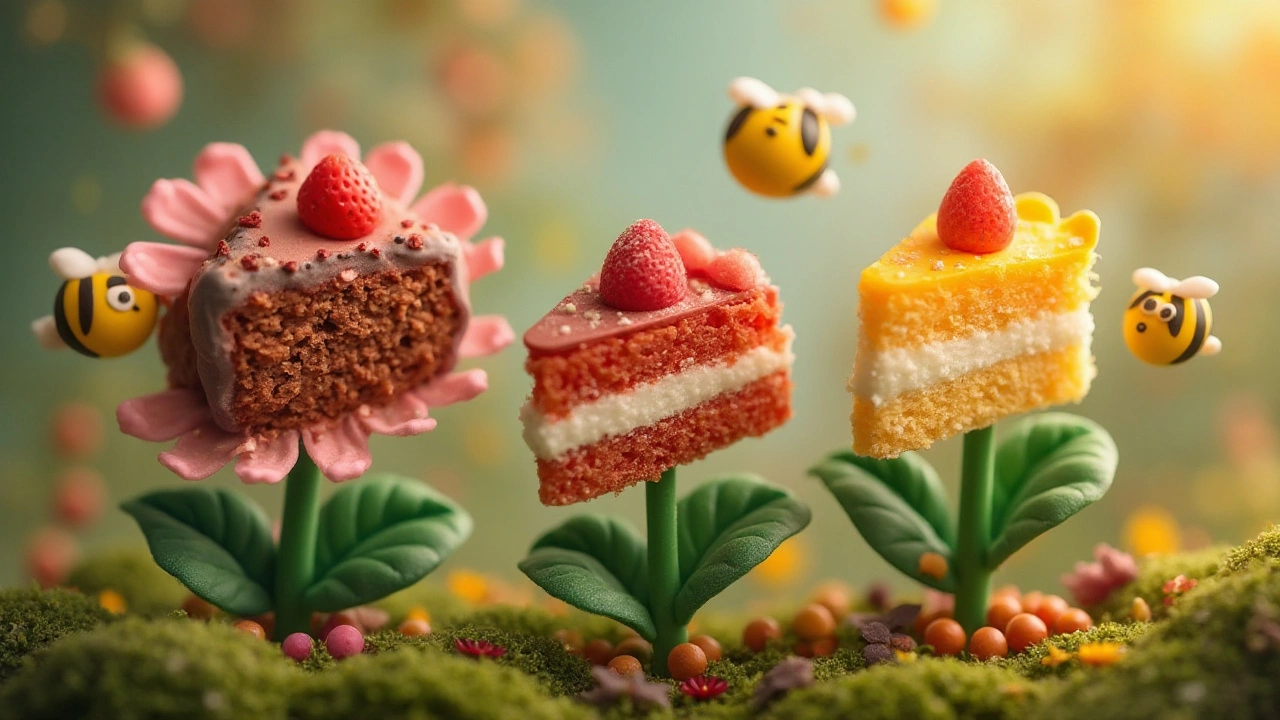
Tips for Baking Ultimate Delicious Cakes
Baking a cake that tantalizes the taste buds and leaves a lasting impression is truly an art. The journey to achieving such a dessert begins with choosing the right ingredients and understanding their role in the baking process. First and foremost, always opt for high-quality ingredients. Fresh butter, free-range eggs, and high-grade flour can make all the difference in terms of flavor and texture. Measure your ingredients accurately using a kitchen scale to ensure the ratios are perfect. This precision helps in achieving the desired crumb and moistness in your cake.
Temperature plays a crucial role in baking, so it is essential to preheat your oven as dictated by the recipe. However, not all ovens are the same, which means investing in an oven thermometer might be a good idea to ensure accuracy. Remember, cakes love even heat; thus, avoid frequent opening of the oven door as it can cause the cake to collapse. Timing, too, is everything. Use a timer as overbaking can lead to dryness, sapping your beautiful creation of moisture and flavor.
Mixing is another key aspect where many go astray. Over-mixing the batter can result in a dense cake, whereas under-mixing might leave you with pockets of dry ingredients. The trick is to mix until just combined, especially after adding flour. A stand mixer with a paddle attachment can be very helpful, but for more delicate cakes like sponge, consider the gentler hand-folding method. This ensures your cakes remain airy and light.
Once your cake has cooled, it’s time to frost. A crumb coat, which is a thin layer of frosting, seals the cake and keeps crumbs from surfacing in the final layer. Let this set in the refrigerator before applying the outer layer of frosting for a smooth finish. For an extra level of professionalism, consider using a cake turntable—it simplifies the process, making it easier to achieve even frosting.
Baking tips don’t stop at the technique; imagination plays a part too. Experiment with layers and fillings to add complexity to the flavor profile, such as lemon curd or raspberry preserve, which can cut through rich butters and add freshness to your cake. As famous chef Julia Child once said,
"A party without cake is just a meeting."This underlines how important and celebratory a well-baked cake can be. Finally, practice makes perfect; don’t be disheartened by a failed attempt. Each cake you bake is a step closer to mastering the craft of making delicious cakes.
Experimenting with Unique Flavors
When stepping into the wonderland of cakes, one's imagination should be a close companion. Risk-taking and innovation often lead to the most delicious discoveries. Baking is both an art and a science, and experimenting with unique flavors is where creativity truly shines. A myriad of ingredients can be thoughtfully combined to create a cake that surprises and delights the senses. Unusual flavors like lavender, black sesame, or passionfruit can be seamlessly woven into your favorite cake recipes, adding twists that are both unfamiliar and exciting. Not only do these flavors provide a burst of intrigue after the first bite, but they also offer a great way to expand your baking repertoire.
Consider delving into the timeless flavor spectrum that cultures around the world embrace. Middle Eastern desserts frequently employ floral notes such as rosewater or orange blossom, which can be introduced to a sponge cake with delicate subtlety. A splash of tangy yuzu curd from Japan or the earthy richness of pistachio from the Mediterranean can transform good cakes into great ones. For the adventurous baker, the incorporation of savory elements like rosemary or basil might seem unorthodox, yet these herbs can lend a sophisticated depth, making the resulting cake a conversation starter.
In recent times, the inclusion of unusual textures, like popping candy or hidden layers of crackly caramel, has taken the culinary world by storm. Juicy bursts from a pomegranate seed or a crunchy bite of candied ginger heighten the sensory experience and add an element of surprise. When experimenting, keep in mind the balance of flavors to ensure the cake is harmonious rather than overwhelming. A delicious cake often thrives on balance: sweet balancing sour, soft complementing crunchy.
"When you have a mix of flavors and textures in cake, it feels like a journey," says renowned pastry chef Dominique Ansel. "Each bite offers something new, and that's what makes cakes truly memorable."
To help navigate the vast world of cake flavors, it may be useful to test your combinations with small batches or cupcakes first. This way, adjustments can be made without the commitment of an entire cake. Record your successes and mishaps to refine the blends and discover what resonates with your taste buds. Some bakers even maintain a flavor diary where they log the impact of different ingredients on their creations. As you venture into this flavor-forward baking, share your experiences and gather feedback, as this input can offer invaluable insights that lead to future success.
Statistics have shown that about 68% of people are more likely to remember an experience if it involves an unusual or standout taste. Imagine presenting a cake recipe at a gathering that piques curiosity and evokes a cascade of questions on the first bite. This could be the start of developing a recipe that's your signature. Ultimately, whether you’re a culinary professional or a home baking enthusiast, innovating cake flavors can be as rewarding as it is delicious.

